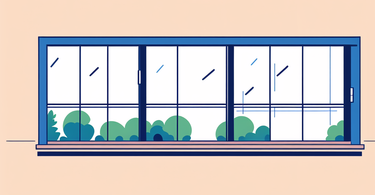Understanding the Importance of Space Optimization in Patio Furniture
The Role of Storage in Small Outdoor Spaces
Small patios need smart storage solutions. Built-in storage in patio furniture helps keep things tidy. It gives you a place to put cushions, toys, and garden tools. This means less clutter and more space to enjoy.

Storage in patio furniture also protects your stuff. It keeps things safe from rain and sun. You don't need extra storage boxes that take up space. Instead, your furniture does double duty.
Good storage options make your patio more useful. You can quickly tidy up when guests come over. Everything has a place to go. This makes your small outdoor space feel bigger and more organized.
Maximizing Versatility with Multi-functional Furniture
Multi-functional patio furniture is a game-changer for small spaces. These pieces do more than one job. A bench might open up for storage. A table could have drawers for keeping things neat.
This type of furniture helps you make the most of your patio. You can have seating, storage, and style all in one piece. It's perfect for patios where every inch counts.
Multi-functional furniture also adapts to your needs. It can change as your plans change. This flexibility is great for small patios. You can easily switch from relaxing to entertaining without needing extra furniture.
Key Factors to Consider When Selecting Patio Furniture with Storage
Assessing Quality and Durability for Outdoor Use
When buying patio furniture with storage, look for tough materials. They need to handle sun, rain, and changing temperatures. Good choices include teak, aluminum, and all-weather wicker.

Check how the furniture is made. Strong joints and good finishes are important. They help the furniture last longer outdoors. Look for waterproof storage areas to keep your things dry.
Don't forget about comfort. The furniture should be nice to use, not just good for storage. Test it out if you can. Make sure it feels sturdy and well-made. Good quality furniture will save you money over time.
Space-Saving Design: Balancing Aesthetics and Functionality
Choose patio furniture that looks good and works well. It should fit your style and your space needs. Look for slim designs that don't take up too much room. But make sure they still offer enough storage.
Think about how the furniture will fit in your patio. Measure your space before you buy. Look for pieces that can be moved easily. This lets you change your patio layout when you want to.
Color and style matter too. Pick furniture that matches your outdoor decor. Many storage pieces come in different looks. You can find something that fits your taste, from modern to classic styles.
Evaluating the Cost-Benefit of Storage Features
Patio furniture with storage might cost more at first. But think about what you're getting. You're saving money on separate storage units. You're also saving valuable patio space.
Consider how much use you'll get from the storage. If it makes your patio more enjoyable, it's worth it. Think about the convenience of having everything you need close at hand.
Look at the long-term value. Good quality pieces last longer. They can save you money over time. You won't need to replace them as often. The extra storage can also help protect your outdoor items.
Top 10 Space-Saving Patio Furniture Options on the Market
Innovative Storage Solutions for Patio Enthusiasts
- Storage Bench: Great for seating and storing cushions or tools.
- Nesting Tables with Hidden Compartments: Perfect for small items and saving space.
- Ottoman with Lift-Top Storage: Ideal for extra seating and hiding clutter.
- Planter Box with Built-in Bench: Combines greenery, seating, and storage.
- Deck Box Coffee Table: Offers lots of storage and serves as a centerpiece.
These pieces show how storage can be part of your patio design. They keep things tidy without taking up extra space. Each one serves multiple purposes, making your patio more functional.

Multi-functional Furniture: Combining Storage and Style
- Convertible Sofa with Under-Seat Storage: Changes from sofa to bed with hidden storage.
- Dining Table with Built-in Cooler: Perfect for meals and keeping drinks cold.
- Modular Sectional with Storage Units: Customizable seating with hidden storage.
- Bar Cart with Storage Drawers: Mobile serving station that stores bar items.
- Adirondack Chair with Side Table and Storage: Classic look with modern storage.
These multi-use pieces do more than one job. They offer comfort, style, and smart storage. They're perfect for making the most of small patios. Each item helps you enjoy your outdoor space more.
Customer Reviews and Expert Recommendations
Reading customer reviews helps when choosing patio furniture. They tell you how well things work in real life. Look for comments about ease of use, durability, and storage space.
Experts suggest measuring your patio before buying. Plan where each piece will go. This ensures everything fits well and looks good. They also recommend thinking about how you use your patio.
Many people love the convenience of built-in storage. It keeps patios tidy and clutter-free. Some advise checking the quality of hinges and seals on storage areas. This ensures they work well and keep things dry.
Experts also talk about care. They say to clean your furniture regularly. Store it properly in winter if you can. Using covers can help protect it from weather damage. This care helps your furniture last longer.
Overall, space-saving patio furniture with storage is great for small outdoor areas. It helps you enjoy your patio more. You get style, comfort, and smart storage all in one.
